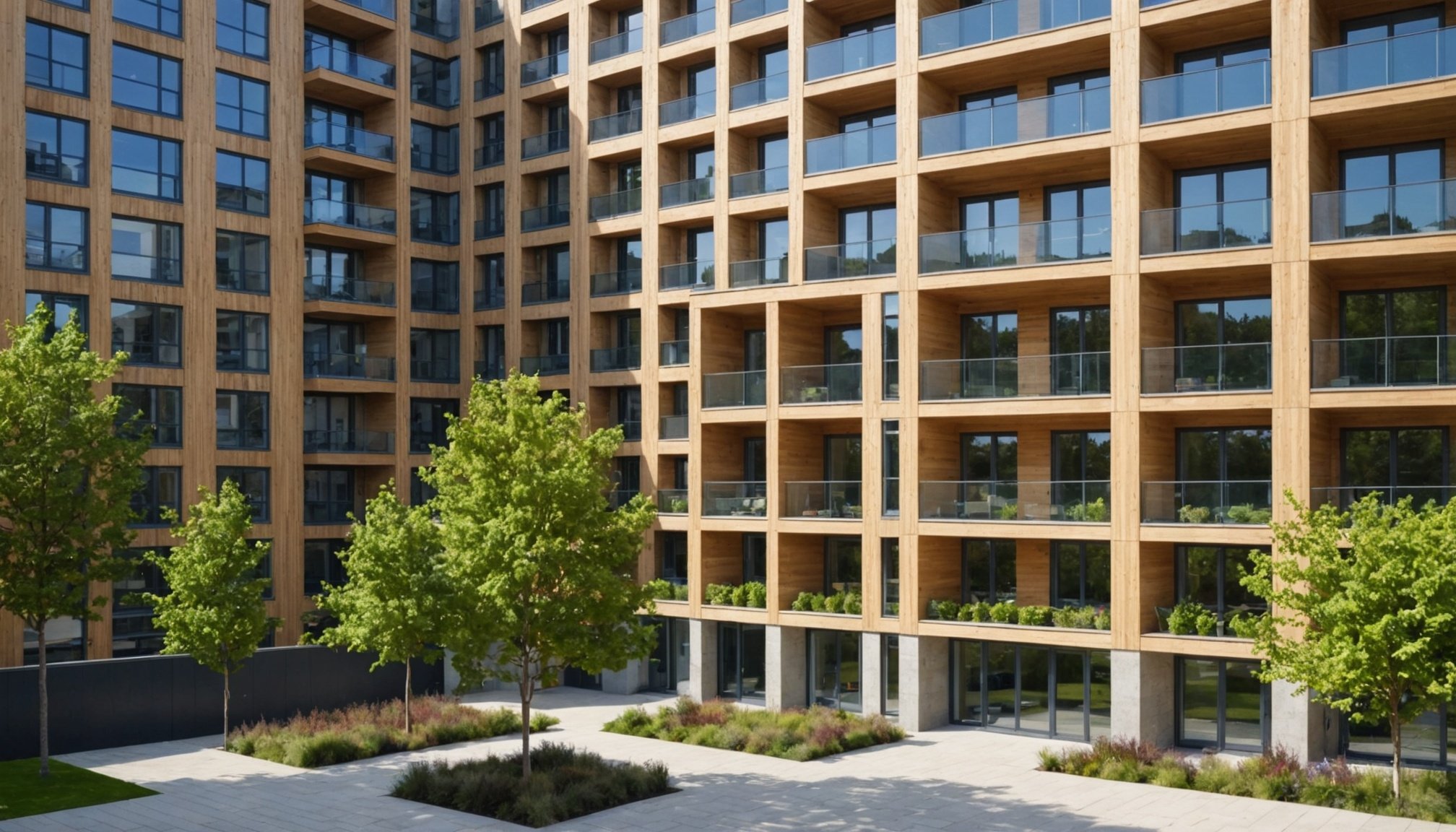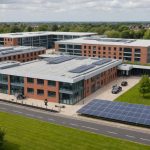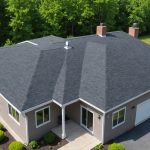Market Overview of Eco-Friendly Buildings in the UK
The UK market trends for eco-friendly buildings reveal a significant surge in both interest and application. This growth trajectory is largely driven by an increasing awareness of the environmental responsibilities both businesses and individuals face today. The current state shows a remarkable shift towards sustainable construction practices, underpinned by the government’s commitment to achieving net-zero carbon emissions by 2050.
Factors driving the demand for sustainable construction encompass a combination of regulatory incentives, technological advancements, and societal pressure for greener living spaces. Energy efficiency and the reduction of carbon footprints are now high on the agenda, with many new buildings incorporating renewable energy sources and sustainable materials as standard practice.
Also to read : Unlocking the Benefits: Fiscal Incentives for Building Energy-Efficient Structures in the UK
The environmental impacts of eco-friendly buildings extend beyond just reduced emissions. They significantly contribute to resource conservation and enhanced biodiversity through green roofs, solar panels, and efficient water usage systems. Economically, these buildings offer long-term savings with lower energy and maintenance costs, proving advantageous to both homeowners and businesses.
Furthermore, these eco-friendly buildings are supporting the UK’s economy by fostering the growth of green industries and creating new job opportunities within the sustainable construction sector. As awareness and technology continue to rise, the market for environmentally conscious buildings in the UK is expected to see sustained growth.
Also to discover : Essential Strategies for UK Landlords to Navigate Upcoming Eviction Law Changes
Financial Benefits of Investing in Eco-Friendly Buildings
Investing in eco-friendly buildings offers substantial investment benefits, primarily through their potential for high return on investment (ROI). As buildings are designed to be energy-efficient, they exhibit noticeably reduced operational costs, which can lead to significant savings over time. These savings often translate into improved ROI for investors, as lower utility bills and maintenance expenses enhance the economic performance of these properties.
Eco-friendly buildings can also benefit from various financial incentives, including tax credits, rebates, and grants provided by governments to support sustainable construction efforts. This further enhances the financial appeal of these investments, making them more attractive to both new and seasoned investors.
Moreover, as sustainability becomes more crucial in real estate markets, the value of eco-friendly properties tends to appreciate. Buyers and renters increasingly prioritize green features, so such buildings frequently experience greater demand and higher resale values. This appreciation contributes to the overall financial benefits of investing in these properties, presenting a promising long-term financial outlook for investors.
Ultimately, the combination of reduced operating expenses, available financial incentives, and property value appreciation highlights the comprehensive financial advantages of eco-friendly building investments. These factors collectively underscore the sound economic rationale behind choosing sustainable construction projects.
Government Incentives and Support for Eco-Friendly Investments
As sustainability becomes a global priority, government incentives play a crucial role in promoting eco-friendly investments. Various programs are designed to encourage sustainable construction, thus paving the way for a greener future.
One major form of support is through tax benefits and rebates. Investors can receive significant financial returns by opting for eco-friendly building projects. For instance, providing tax deductions on renewable energy installations or offering reduced property taxes for buildings that achieve certain environmental standards can effectively boost sustainable investments. These financial incentives not only lower the initial costs for investors but also improve long-term profitability.
Alongside incentives, compliance with existing regulations is vital for unlocking further investment opportunities. Regulations often establish minimum standards for energy efficiency, waste management, and resource usage. By adhering to these standards, companies can gain easier access to funding and reduce legal risks. Compliance ensures that projects are not only creating an immediate benefit but also supporting broader environmental goals.
Overall, government initiatives and regulatory frameworks serve as powerful tools for stimulating eco-friendly investments. By understanding and leveraging these opportunities, investors can contribute to sustainable development while reaping economic advantages. This alignment of policy and practice is crucial for creating a resilient and resource-efficient future.
Case Studies of Successful Eco-Friendly Building Investments
Investors eager to enter the realm of eco-friendly building projects will find numerous compelling examples within the UK. These successful projects showcase the potential returns and sustainability benefits they can offer.
One standout example is the BedZED development in Sutton, London. This pioneering project features highly efficient energy systems and innovative architectural design, which has reduced carbon emissions significantly while also providing a model for future developments.
By analysing these case studies, potential investors can identify strategies that lead to both environmental and financial success. Projects like The Edge in Amsterdam, though outside the UK, can inspire UK-based ventures through its seamless integration of sustainable architecture and smart technology. The lessons learned emphasize the importance of aligning eco-friendly practices with economic viability.
Key takeaways for investors include prioritisng designs that enhance energy efficiency, utilising sustainable materials, and incorporating renewable energy systems. It’s essential to consider the long-term operational savings and increased property value associated with buildings that meet sustainable standards.
Ultimately, these case studies demonstrate that effective eco-friendly projects are not only attainable but can also offer substantial financial returns. Leveraging these insights will undoubtedly aid investors in making informed decisions that harmonise economic and environmental interests.
Market Growth Data and Future Trends in Eco-Friendly Buildings
Understanding the market growth data for eco-friendly buildings involves examining recent statistical trends within this burgeoning sector. Recent analyses reveal consistent expansion, driven primarily by increasing demand for sustainable construction. In fact, the global green building materials market is forecasted to reach significant valuations, reflecting sustainability forecasts and heightened environmental awareness.
Looking at future trends, one can expect further emphasis on innovative materials and technologies that enhance energy efficiency and reduce carbon footprints. For instance, advancements in solar panel integration and smart home technologies present substantial opportunities for investors in sustainable architecture.
Investment opportunities are set to proliferate as eco-friendly buildings become even more integral to development strategies worldwide. The sector’s evolution aligns with broader global sustainability movements, underscoring the transition toward greener urban landscapes.
In the context of the UK, the impact of these movements is evident. Government incentives and policy shifts towards sustainability have accelerated the adoption of eco-friendly designs, positioning the UK as a leader in sustainable construction.
By keeping updated with sustainability forecasts and market growth data, stakeholders within this field can align their strategies to benefit from these emerging trends and opportunities. This proactive approach ensures alignment with both economic goals and environmental responsibilities.
Practical Tips for Identifying and Evaluating Eco-Friendly Investment Opportunities
In the realm of sustainable investments, detailed investment evaluation is crucial in differentiating promising ventures from less viable ones. When assessing the viability of eco-friendly building projects, it is imperative to adopt a structured approach. Start by investigating the project’s compliance with recognized sustainability standards, such as LEED or BREEAM. These certifications can provide a baseline assurance of environmental responsibility.
Utilize robust tools and resources for investors, such as green rating platforms and carbon footprint calculators, to aid in identifying viable opportunities. These tools not only streamline the evaluation process but also ensure that the projects align with your eco-friendly investment goals.
Consider several key factors when evaluating potential investments. Assess the environmental impact of the project’s location, design, and materials. It’s vital to ensure that the project’s sustainability claims are underpinned by tangible features, such as renewable energy systems or water efficiency measures.
Moreover, practical tips include engaging with industry experts and attending sustainability conferences to stay abreast of emerging trends and technologies. Pioneering sustainable investments demand an understanding of both immediate benefits and long-term impacts, ensuring that the capital flows toward truly eco-friendly initiatives. This strategic mindset enhances the prospects of achieving both financial returns and environmental contributions.











